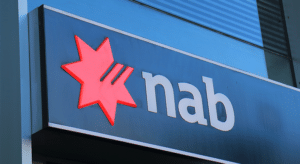Stablecoin transaction successfully executed by NAB

National Australia Bank (NAB) have released a statement claiming that they have successfully carried out the first-ever intra-bank, cross-border stablecoin transaction, a landmark moment for a major financial institution.
The transaction was executed with the use of AUDN, NAB’s very own issue of a stablecoin, pegged at a one-to-one with the Australian Dollar.
The historic transaction was successfully completed on the Ethereum blockchain with the use of smart contracts for seven major global currencies, including dollar for Australia, Singapore and USA, Euro, Japanese yen and British pound.
The executive general at NAB stated that the institution is heavily invested in developing Australia’s “safest, simplest and most secure digital asset ecosystem”.
This pilot transaction poses the brilliant prospect of reduce cross-border and intra-bank transfers from a day’s long process to one that could take minutes. Indicating a future with instant international payments at a fraction of the cost. With the potentiality to render the current SWIFT transfer system redundant.
SWIFT transaction system
The SWIFT transfer system is one which is heavily relied upon, with more than 11,000 global members comprised of some of the world’s most powerful banking institutions. Still growing in its relevance for the time being, SWIFT is essentially a vast messaging network that its member institutions use to securely send information or instructions utilizing a standard system of codes.
The most attractive aspect for the system is that SWIFT is not a financial institution itself and does not hold assets, gaining its power from being a secure facilitator of transactions between institutions. Which is importantly a point of leverage also available through a stablecoin transaction.
NAB plans

Using the AUDN, the NAB issued stablecoin, which will be fully backed with the Australian dollar and minted using the ERC-20 standard to be managed as a liability of the bank. NAB are committed to finding equally as secure, even faster means to increase both the pace and the transparency of transaction all while reducing the overall cost and complexity to consumers.
The pilot transaction that hopes to be the jumping off point for banks using web2.0 and web3.0 technology in their services was supported by the Fireblocks platform and under the consultation of Blockfold. The success of the experiment can in no small part be attributed to the wealth of expertise applied to the smart contract deployment, secure minting and burning of the stablecoin as well as the direct management of the digital asset along the blockchain network.
Banking and the stablecoin market
The stablecoin market and banking institutions have in other parts of the world, been rather tumultuous to say the least. With crypto friendly banks being subject to government disruption and hostility in a multitude of cases originating in the USA to be specific. With instances such as Silicon Valley, Silvergate and Signature banks to name a few, this leaves Australia’s institutions to lead the way.
Prior to NAB’s new pilot transaction, Australian dollar-linked A$DC stable coin was launched in March 2022, by Australia and New Zealand (ANZ) banking group, who together with NAB have been working with the government and other financial regulators to be part of the discussion when developing legislation regarding stablecoins and their wider industry.
However this issue pans out, NAB have made a monumental step towards creating a system where intra-bank cross-border stablecoin transactions along with a plethora of other optimised financial services operated through the blockchain can eventually become common place.









